Soccer, or football as it’s known in many parts of the world, is not just a game; it’s a global phenomenon that transcends borders, languages, and cultures. Revered as the world’s most popular sport, it captivates the hearts of billions across continents, weaving a tapestry of emotions, from exhilarating joy to heart-wrenching defeats.
This blog post aims to explore the grandeur of soccer through its most illustrious tournaments and games. From the prestigious FIFA World Cup, which unites nations in a common passion, to the UEFA Champions League, where club allegiances forge fierce rivalries, each tournament has its unique charm and history. We delve into the cultural and social impact of these competitions, showcasing not just the game but the spirit, unity, and global celebration that soccer embodies.
Join us as we embark on a journey through the biggest soccer tournaments and games, where legends are made, and history is written with every kick of the ball.
Introduction to Global Soccer Tournaments
In this section, we explore the magnetic appeal of soccer, a sport that resonates globally and brings together diverse cultures under the banner of exhilarating competition. We’ll delve into how soccer tournaments have become more than just games, evolving into significant cultural and social phenomena with far-reaching impacts.
The Magnetism of Soccer: A Global Phenomenon
Soccer fans are a breed apart. Their passion knows no bounds, and their emotional investment in the game is unparalleled. Supporting a soccer team isn’t merely an activity; it’s an emotional rollercoaster ride. The thrill of a last-minute goal, the agony of a penalty shootout loss, and the enduring hope that next season will bring glory—it’s a journey filled with intense emotions.
What’s remarkable is that this passion extends beyond the 90 minutes on the field. It seeps into daily life, influencing conversations, social plans, and even moods. When your team wins, the world seems brighter; when they lose, it feels like a personal setback. This emotional connection is what transforms soccer from a sport into a way of life.
Soccer’s Cultural and Social Impact: Worldwide
The impact of soccer extends far beyond the boundaries of the pitch. It is a cultural force that shapes identities, forges communities, and influences social narratives. In many countries, soccer is intertwined with national identity, with national teams becoming symbols of unity and pride.

Organizations such as Starfinder, the source for the image above, are at the forefront of using soccer as a catalyst for change.
The sport also plays a pivotal role in social change. It has been a platform for addressing issues like racism, poverty, and gender inequality, giving voice to the marginalized, and fostering a spirit of inclusivity and diversity. Soccer clubs and players often transcend their athletic roles, becoming agents of charitable efforts and social awareness campaigns. The sport’s global reach has also facilitated international camaraderie and understanding, bridging cultural gaps and fostering global connections.
At its core, soccer is more than a game; it’s a unifying force that brings together people from all walks of life, creating a universal community bonded by a shared love for the sport.

The World Cup: Soccer’s Crown Jewel
In the realm of international soccer, the FIFA World Cup stands as the undisputed crown jewel. Occurring every four years, this prestigious tournament transcends the sport itself, capturing the imagination of billions around the globe. It’s a celebration of soccer at its highest level, where nations unite under the common language of their love for the game, showcasing skill, competition, global unity, and cultural exchange.
History and Significance: FIFA World Cup
The FIFA World Cup, inaugurated in 1930, is steeped in a rich history that reflects the evolution of soccer over the decades. Conceived by FIFA president Jules Rimet, the inaugural tournament in Uruguay marked the beginning of the most prestigious event in world soccer. Initially featuring a modest number of teams, the World Cup has expanded to include 32 nations, symbolizing the global reach and inclusivity of the sport.
Its significance transcends the realm of sports, serving as a stage where nations showcase their talent, culture, and national pride. The World Cup is more than just a competition; it’s a quadrennial event that brings the world together, fostering a spirit of camaraderie and international understanding.
Every edition of the World Cup adds a new chapter to soccer’s history, reflecting changes in tactics, technology, and the global socio-political landscape. The tournament has also catalyzed infrastructural development and economic growth in host countries, leaving behind legacies that benefit communities long after the final whistle.
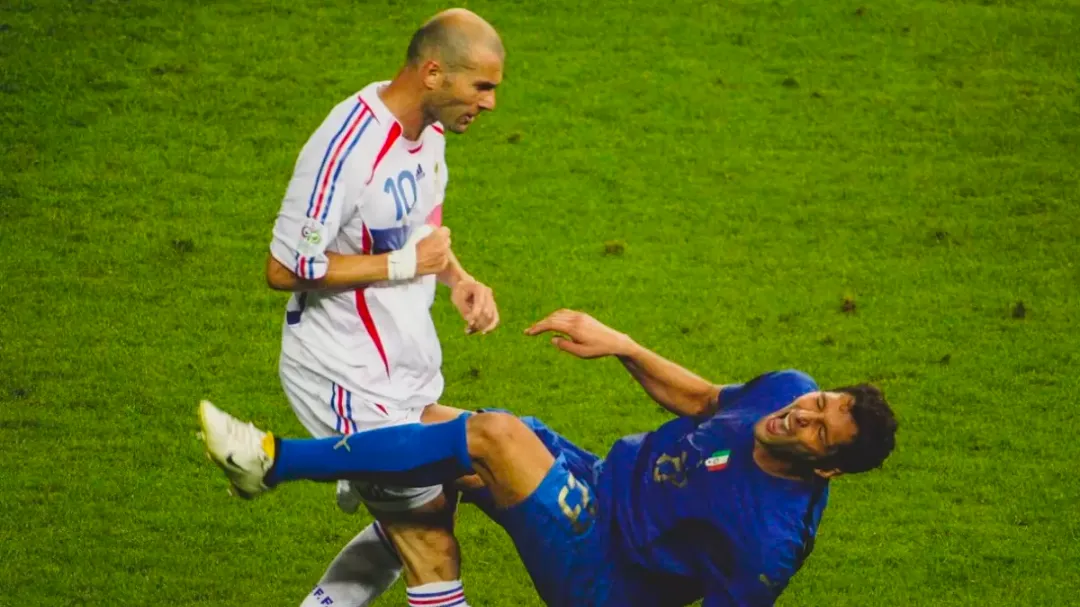
Memorable Moments: World Cup History
The World Cup is a treasure trove of unforgettable moments that have shaped the history of soccer. From Diego Maradona’s ‘Hand of God’ goal in 1986 to the iconic image of a triumphant Pelé in 1970, these moments are etched in the memory of soccer fans worldwide. One of the most remarkable matches in World Cup history was the 1950 final, where Uruguay stunned Brazil in Rio de Janeiro, an event still remembered as the “Maracanazo.”
In recent history, the 2006 Zidane headbutt and the 2014 stunning 7-1 victory of Germany over Brazil speak of drama and unexpected turns that the tournament invariably brings.
Here are some of our favorite other World Cup moments:
The 1998 World Cup saw a multicultural French team emerge, symbolizing diversity and unity in sport. These moments are not just highlights of matches; they represent the emotional highs and lows experienced by players and fans alike, showcasing the human aspect of this beautiful game.
Each World Cup brings its own stories, heroes, and legends, contributing to the rich tapestry that makes soccer the world’s most beloved sport.
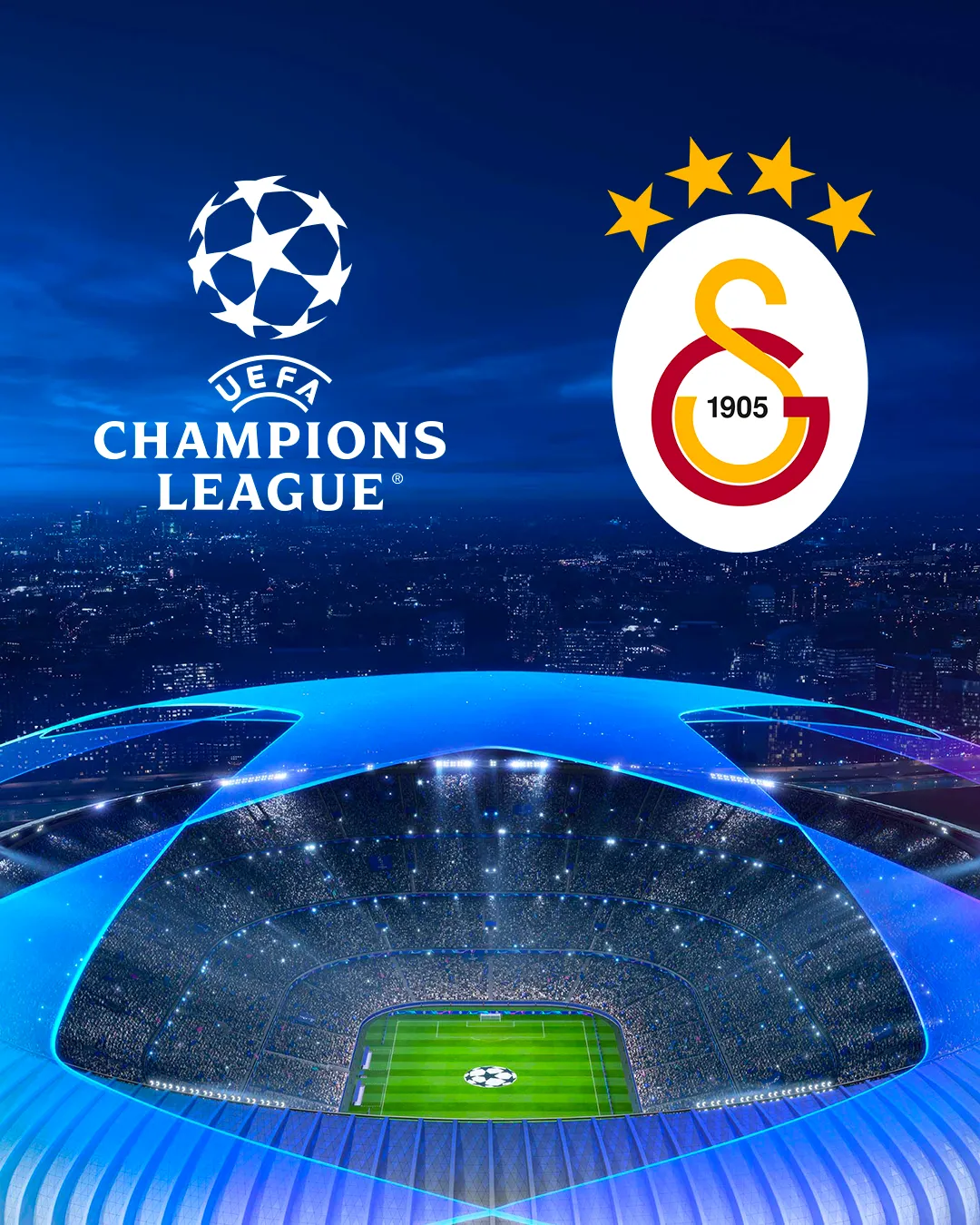
The UEFA Champions League: Europe’s Premier Club Competition
The UEFA Champions League, renowned as Europe’s premier club competition, epitomizes the pinnacle of club football. This tournament draws the continent’s top clubs yearly in a spectacular showcase of skill, strategy, and passion.
Revered by players and fans alike, the Champions League is a battleground where legends are made, and footballing history is written under the anthem that resonates with the promise of unforgettable nights and football of the highest caliber.
Evolution: UEFA Champions League
The UEFA Champions League, initially known as the European Cup, was established in 1955, evolving into the most prestigious club competition in European football. Its inception marked a new era in the sport, where the best clubs from various European leagues competed against each other, transcending national boundaries. Over the years, the format of the competition has evolved, expanding from a knockout tournament exclusively for league champions to include the top-ranking teams from the strongest European leagues.
The introduction of the group stage in the 1992-93 season marked a significant turning point, rebranding the competition as the UEFA Champions League. This change increased the number of matches and enhanced the tournament’s commercial appeal and global reach. The iconic anthem, the starball logo, and the introduction of night games under the floodlights added to its allure and mystique. The Champions League has become a symbol of excellence in club football, offering a stage where Europe’s elite clubs battle for supremacy and where tactics, talent, and teamwork are tested at the highest level.
Legendary Matches and Teams: Champions League History
The UEFA Champions League has been graced with countless legendary matches that have captivated fans worldwide. One of the most unforgettable was the 1999 final in Barcelona, where Manchester United staged a stunning comeback against Bayern Munich, scoring two goals in injury time. Another remarkable match was the 2005 final in Istanbul, where Liverpool overturned a 3-0 halftime deficit against AC Milan to win on penalties, a game famously dubbed “The Miracle of Istanbul.”
Teams like Real Madrid, which holds the record for the most Champions League titles, and FC Barcelona, known for their mesmerizing style of play, have left an indelible mark on the competition. The rivalry between Lionel Messi and Cristiano Ronaldo, two of the greatest players of their generation, further fueled the excitement, with both players leading their respective teams to multiple titles.
The tournament has also been a platform for underdogs, like Ajax in 1995 and FC Porto in 2004, to defy the odds and claim the ultimate prize in European club football. These matches and teams not only define the legacy of the Champions League but also embody the spirit of excellence and the relentless pursuit of glory that the tournament represents.
Here are 50 of our favorite UEFA Goals of all time.
Copa América: South America’s Pride in Soccer
![argentina's lionel messi and teammates celebrate winning the copa america [amanda perobelli reuters]](http://jka.sfw.mybluehost.me/wp-content/uploads/argentinas-lionel-messi-and-teammates-celebrate-winning-the-copa-america-amanda-perobelli_reuters.webp)
Argentina’s Lionel Messi and teammates celebrate winning the Copa America [Amanda Perobelli/Reuters]
Copa América, South America’s premier football competition, is a testament to the continent’s deep-rooted love and passion for the sport. This tournament, the oldest international football competition, has been a stage where the rich footballing heritage of South America is celebrated and revered. Since its inception in 1916, Copa América has been more than just a competition; it’s a vibrant festival of football that encapsulates the fiery spirit, technical prowess, and indomitable passion that are hallmarks of South American soccer.
Here, legends are born, and rivalries are etched in the annals of history. From Brazil’s samba flair to Bolivia’s high-altitude resilience, each participating nation brings unique style and enthusiasm to the tournament. Copa América is not just about crowning the champion of South America; it’s a showcase of the cultural diversity, unity, and footballing philosophy that defines this continent. The tournament has given the world some of its greatest footballers and most memorable matches, contributing significantly to the global narrative of the beautiful game.
Rich Tradition: Copa América
Copa América’s rich tradition dates back over a century, making it the oldest international football competition in existence. Originating in 1916 to celebrate the centenary of Argentina’s independence, it has since become a quadrennial celebration of South American football prowess. The tournament has been instrumental in developing and showcasing each South American nation’s unique play styles. From the technical and tactical brilliance of the Argentine and Uruguayan teams in the early 20th century to the emergence of Brazil as a football powerhouse, Copa América has been a mirror reflecting the evolving dynamics of the sport in the continent.
The tournament has also been a platform for socio-political expressions, where football has intertwined with national identities and pride. Over the years, it has adapted to changing times, expanding to include guest teams from other continents, enriching the competition, and fostering a broader football dialogue. The enduring appeal of Copa América lies in its ability to blend tradition with modernity, preserving the deep-rooted football culture of South America while evolving to meet contemporary standards of the global game.
Iconic Players and Matches: Copa América
Copa América has been a stage for many of football’s greatest players to showcase their talents. Icons like Pelé, Diego Maradona, Zico, and more recently, Lionel Messi and Neymar, have graced this tournament, leaving an indelible mark with their performances. Their exploits on the Copa América field have enthralled fans and been pivotal in shaping their legendary careers.
Memorable matches abound in the tournament’s history. The 1942 final saw Uruguay defeat Argentina in a thrilling match, epitomizing the intense rivalry between these two footballing nations. More recently, the 2007 final showcased Brazil’s dominance with a comprehensive victory over Argentina. The tournament has also witnessed its share of upsets, like when a determined Bolivia reached the finals in 1997, highlighting the unpredictable and competitive nature of Copa América.
Then there was 2021. Check out our favorite goals from that historical tourname:
One cannot discuss Copa América without mentioning the intense Brazil-Argentina rivalry, which has produced some of the most electrifying and memorable matches in football history. These encounters go beyond the game, igniting national pride and passion among millions of fans. Copa América’s rich tapestry of players and matches illustrates the tournament’s significance in the football world and its role in nurturing and showcasing the best South American football talent.
The African Cup of Nations: Celebrating African Soccer Heritage
The African Cup of Nations is a vibrant celebration of Africa’s rich soccer heritage, a tournament that encapsulates the spirit, resilience, and talent of the continent’s football. As the premier international football competition in Africa, it showcases skill, athleticism, and a profound expression of cultural identity and unity. This tournament, rich in history and diversity, brings together nations from across the continent, each with its unique style of play and footballing traditions, making it a kaleidoscope of African football culture.
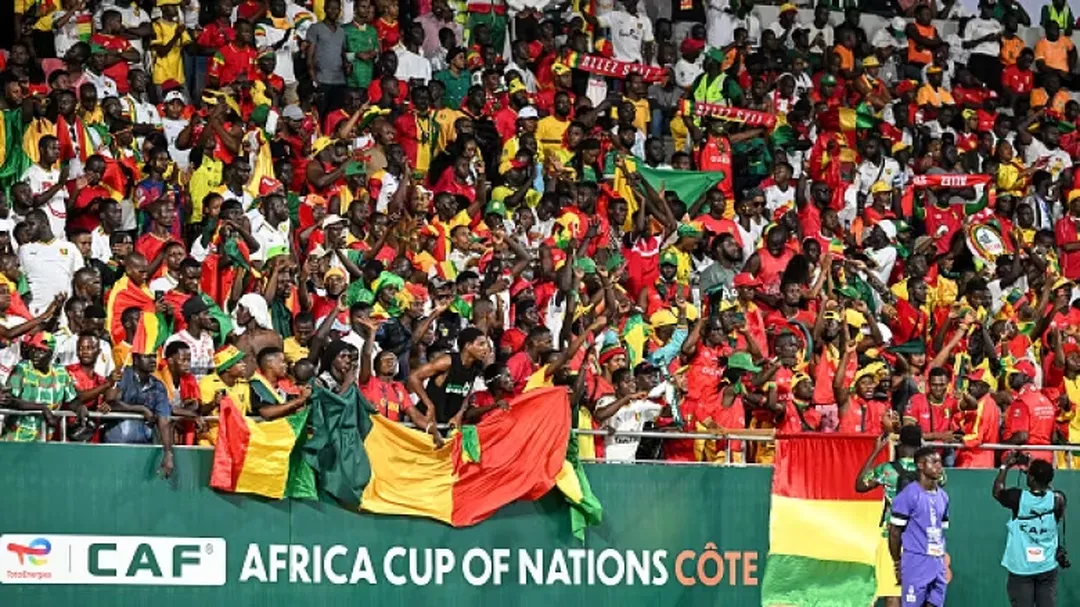
Unique Flavor: African Soccer
African soccer is celebrated for its unique flavor, a blend of raw talent, physicality, and rhythmic flair that sets it apart on the global stage. This distinct style is rooted in the diverse cultures and traditions of the continent, where soccer is more than a game; it’s an integral part of community life. The African Cup of Nations showcases this unique brand of football, where energetic, fast-paced play is complemented by intricate skill moves and a vibrant, almost celebratory approach to the game.
The tournament highlights the rich diversity within African football, from the technically gifted West African teams to the disciplined and strategic approach of North African sides. It’s a melting pot of styles, where each nation brings its approach, influenced by local cultures, playing conditions, and footballing philosophies. This diversity makes for an exciting and unpredictable tournament and contributes significantly to the game’s development globally, as African footballers bring their distinct styles to clubs and leagues worldwide.
Memorable Tournaments: African Cup of Nations
The African Cup of Nations has hosted numerous memorable tournaments, each leaving a lasting impression in the annals of football history. One such tournament was in 1996, when South Africa, just two years after the end of apartheid, hosted and won the competition, a victory that transcended sports and symbolized a new era for the nation.
Another unforgettable moment came in 2012, when Zambia, a team filled with emotion and determination, won the tournament in honor of their national team, who tragically passed away in a plane crash in 1993 near the final’s location in Gabon. Their victory was not just about winning a trophy but was a poignant tribute to their fallen heroes.
Here’s the full match for those interested:
The 2019 tournament in Egypt marked another milestone as it was the first to be expanded to 24 teams, reflecting the growing competitiveness and quality of football across the continent. The tournament has seen dominant performances from teams like Egypt, Cameroon, and Nigeria, each with multiple titles, showcasing the depth of talent in African football.
These memorable tournaments are not just about crowning champions; they are celebrations of resilience, unity, and the indomitable spirit of African football, which continues to inspire and captivate audiences worldwide.
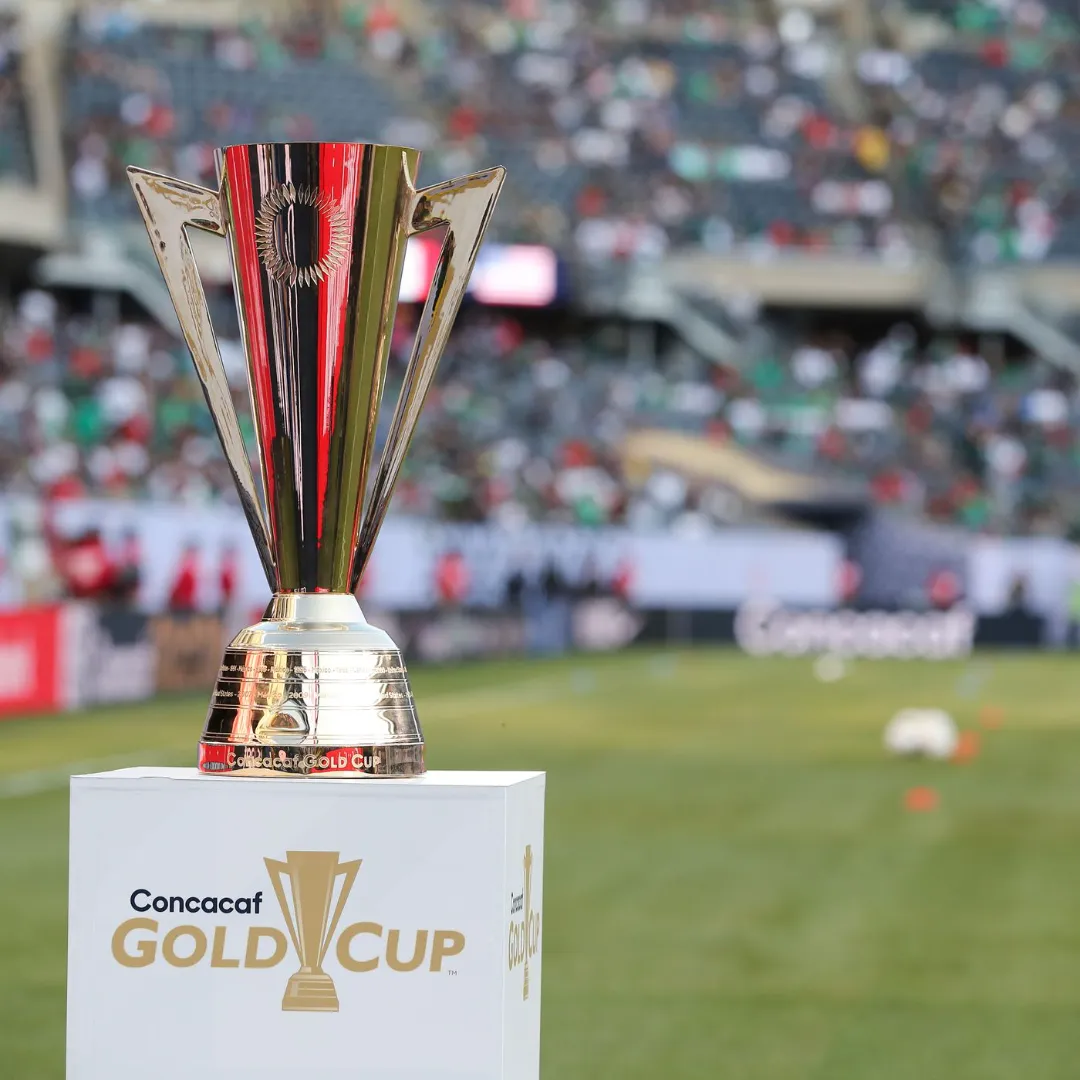
The CONCACAF Gold Cup: North America’s Soccer Battle
The CONCACAF Gold Cup, the premier football tournament of North America, Central America, and the Caribbean, symbolizes soccer excellence and rivalry in this diverse region. This tournament is not just a competition for supremacy among neighboring nations; it’s a vibrant celebration of soccer that showcases the growing talent, passion, and competitiveness in the CONCACAF region. The Gold Cup provides a platform for emerging soccer nations to challenge established powers, creating a dynamic and exciting tournament where underdogs can make their mark on the international stage.
History and Highlights: Gold Cup
The history of the CONCACAF Gold Cup is a tale of soccer evolution and regional unity. Established in 1963 as the CONCACAF Championship, it underwent several transformations before becoming the Gold Cup in 1991. This tournament has been instrumental in the growth of soccer in North America, Central America, and the Caribbean, providing a competitive stage for the region’s teams to showcase their talent.
One of the most significant highlights was including guest teams from outside the region, which added a global flavor to the tournament and increased its competitiveness. The Gold Cup has also seen the emergence of nations like the United States and Mexico as regional powerhouses. At the same time, other teams like Costa Rica, Honduras, and Jamaica have consistently challenged their dominance.
The tournament’s rich history is dotted with memorable matches, dramatic penalties, and stunning upsets that have kept fans on the edge of their seats. It’s a testament to the growth and passion for soccer in the CONCACAF region and a celebration of the sport’s unifying power in North America.
Impactful Players and Teams: Gold Cup
The CONCACAF Gold Cup has been graced by numerous impactful players and teams that have left an indelible mark on the tournament’s history. Players like Landon Donovan, Clint Dempsey, and Giovani dos Santos have been instrumental in their respective national teams’ successes, becoming household names in the region. Their skill, vision, and leadership have propelled their teams to victory and inspired the next generation of soccer talents.
Teams like the United States and Mexico have consistently dominated the Gold Cup, with both nations boasting multiple titles. Their fierce rivalry adds extra intensity to the tournament, creating some of the most memorable matches in Gold Cup history. However, other teams like Canada, Costa Rica, and Jamaica have emerged as formidable contenders, challenging the traditional powers and contributing to the tournament’s competitive balance.
The Gold Cup is not just a showcase of individual talent and team prowess; it’s a testament to the growth and development of soccer in the CONCACAF region, where every match is an opportunity to make history and elevate the sport to new heights.
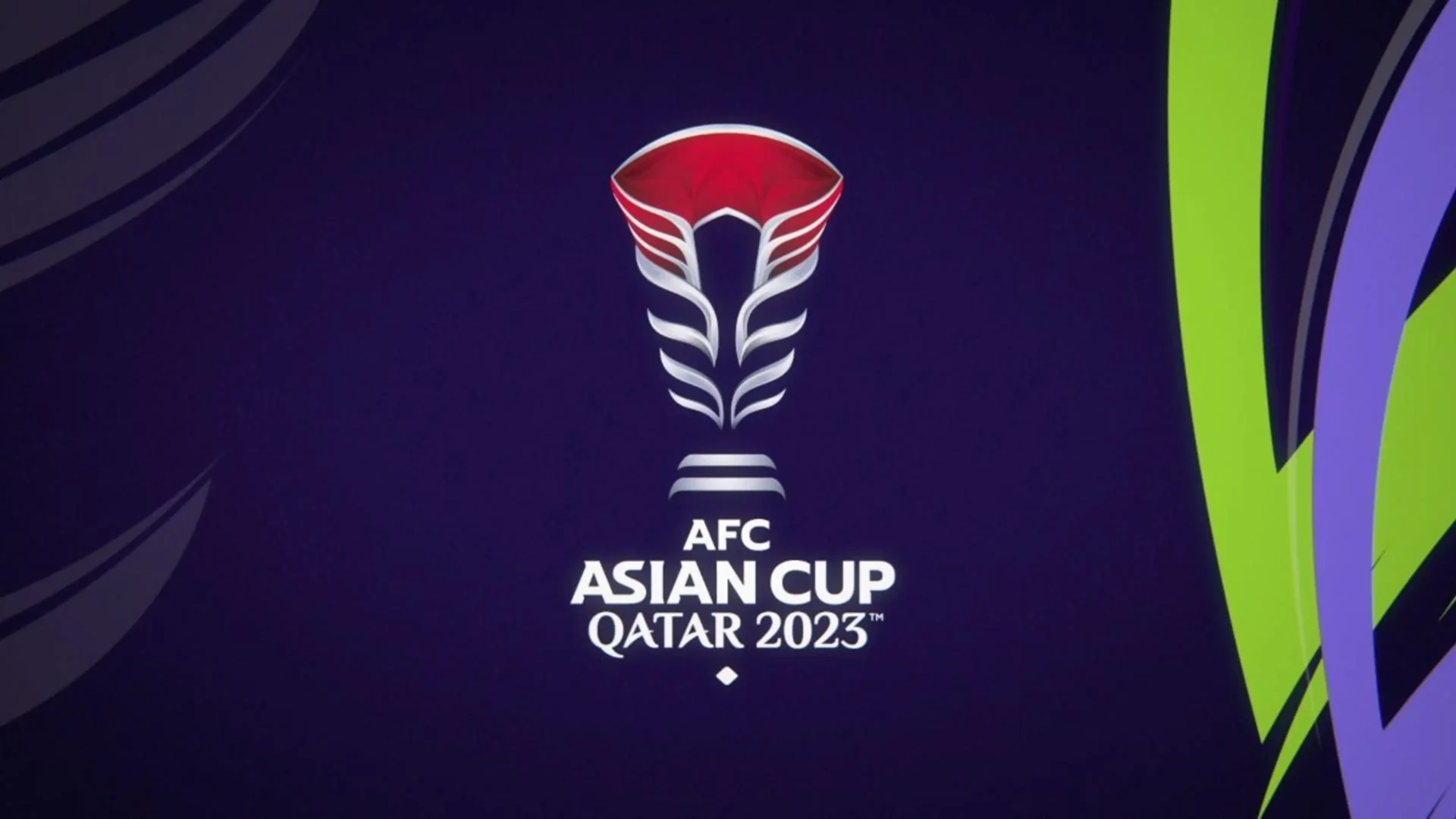
The Asian Cup: Asia’s Soccer Showcase
The AFC Asian Cup, often referred to as Asia’s Soccer Showcase takes its place as one of the most prestigious football tournaments on the continent. Steeped in history and tradition, this biennial competition unites the diverse nations of Asia under the banner of soccer, showcasing the region’s immense talent, passion, and footballing culture. From the towering peaks of the Himalayas to the bustling cities of the Middle East, the Asian Cup is a testament to the power of soccer in bringing together nations with varied backgrounds and traditions, all bound by their love for the beautiful game.
This tournament serves as a stage where Asia’s footballing giants and emerging nations unite in a fierce battle for supremacy. It reflects the continent’s footballing diversity, where different playing styles, strategies, and traditions converge, creating a captivating spectacle for fans and enthusiasts. The Asian Cup not only crowns champions but also fosters a sense of unity and camaraderie among Asian nations, transcending borders and fostering a spirit of brotherhood through soccer.
Growth of Soccer in Asia: Asian Cup’s Role
The AFC Asian Cup has played a pivotal role in nurturing the growth of soccer in Asia, catalyzing the continent’s rise in the global football landscape. Since its inception in 1956, the tournament has been a driving force behind the development of the sport, providing a platform for Asian nations to compete at the highest level. The Asian Cup has witnessed the evolution of established footballing nations like Japan and South Korea. It has also been a launching pad for emerging teams, such as Qatar, who would later achieve global success.
The tournament’s impact extends beyond the pitch. It has been instrumental in boosting infrastructure, youth development, and grassroots initiatives in host countries, leaving a lasting legacy that continues to shape the future of soccer in Asia. The Asian Cup has also served as a bridge for cultural exchange, fostering a deeper understanding and appreciation of the continent’s diverse nations through the universal language of soccer. As Asia’s soccer prowess continues to grow, the Asian Cup remains at the heart of this evolution, guiding the region towards greater achievements on the international stage.
Notable Teams and Tournaments: Asian Cup History
The history of the AFC Asian Cup is marked by the rise of formidable teams and memorable tournaments that have left an indelible mark on Asian soccer. Japan and South Korea have emerged as dominant forces, consistently contending for the title and showcasing their technical brilliance and disciplined gameplay. The rivalry between these two nations, epitomized by their co-hosting of the 2002 FIFA World Cup, has added an extra layer of excitement to the Asian Cup.
Qatar’s triumph in the 2019 Asian Cup marked a historic moment as the nation secured its first major international title, foreshadowing its subsequent success as hosts of the FIFA World Cup in 2022. Other teams like Iran, Saudi Arabia, and the United Arab Emirates have also left their mark on the tournament, contributing to the competitive landscape of Asian soccer.
Tournaments like the 1960 edition, which featured just four teams, have evolved into grand spectacles with expanded formats, increased viewership, and higher competitiveness. The AFC Asian Cup has become a valid showcase of Asian soccer talent, with each tournament contributing to the continent’s growth and influence in the global football arena.

The UEFA European Championship: Europe’s Soccer Fiesta
The UEFA European Championship, affectionately known as the Euros, stands as Europe’s ultimate soccer fiesta, a tournament that embodies the passion, diversity, and excellence of the continent’s footballing culture. Held every four years, the Euros bring together the crème de la crème of European national teams for a month-long celebration of the beautiful game. This tournament is more than just a sporting event; it’s a grand spectacle that unites nations and captivates the hearts of millions across Europe and beyond.
The Euros showcase the rich tapestry of European soccer, where historic rivalries and new narratives are woven into the fabric of the competition. From the artistic flair of Spain to the tactical mastery of Italy and the relentless determination of Germany, each nation brings its unique style to the pitch, creating a captivating mosaic of footballing diversity. The tournament reflects Europe’s unity in diversity, as fans from all corners of the continent come together to support their teams and celebrate the universal language of soccer.
With a history dating back to 1960, the Euros have witnessed the evolution of the sport, marked by iconic moments, legendary players, and memorable matches. It’s a tournament where dreams are realized, underdogs defy the odds, and footballing legacies are etched in history. The UEFA European Championship is not just a competition; it’s a tradition, a festival, and a testament to the enduring power of soccer to unite, inspire, and entertain.
Prestige: UEFA European Championship
The UEFA European Championship, often called the Euros, boasts an unparalleled prestige in international soccer. This tournament, held every four years, is a testament to Europe’s deep-rooted passion for the sport and its commitment to excellence. The Euros are not just a competition; they showcase the continent’s footballing heritage, a stage where nations compete for the ultimate prize in European football.
The prestige of the Euros is reflected in the quality of participating teams, with Europe being home to some of the world’s most successful and iconic footballing nations. The tournament’s rich history is marked by legendary players, world-class coaches, and tactical innovations that have left an indelible mark on the sport. Winning the Euros is a crowning achievement for any nation, a validation of their footballing prowess, and a source of immense national pride.
Beyond the silverware, the Euros hold a special place in the hearts of fans. It’s a celebration of unity and diversity, where fans from diverse backgrounds come together to support their teams and share the universal language of soccer. The prestige of the UEFA European Championship extends far beyond the pitch; it’s a cultural phenomenon, a symbol of European identity, and a showcase of the continent’s ability to host world-class sporting events.
Unforgettable Moments: European Championship
The UEFA European Championship has been the stage for countless unforgettable moments that have become etched in the memory of football fans worldwide. From Marco van Basten’s iconic volley in 1988 to Antonín Panenka’s audacious penalty in 1976, the Euros have produced moments of individual brilliance that define generations.
One of the most remarkable moments in the tournament’s history came in 2004 when Greece, considered underdogs, defied expectations to win the championship, showcasing the unpredictable nature of the Euros. The drama of penalty shootouts, like the one in the 2008 final between Spain and Germany, adds excitement and tension to the competition.
The rivalry between England and Germany, epitomized by their epic clashes in Euro ’96 and Euro 2020, has produced iconic moments that have left fans on the edge of their seats. The Euros are also known for bringing nations together, as seen in the emotional scenes of Portugal’s triumph in 2016 and Italy’s victory in 2020.
Here’s a recap of all of the winners since 1960:
These unforgettable moments are more than just highlights of matches; they are the emotional highs and lows, the human stories, and the shared experiences that make the UEFA European Championship a source of lasting memories and enduring footballing magic.
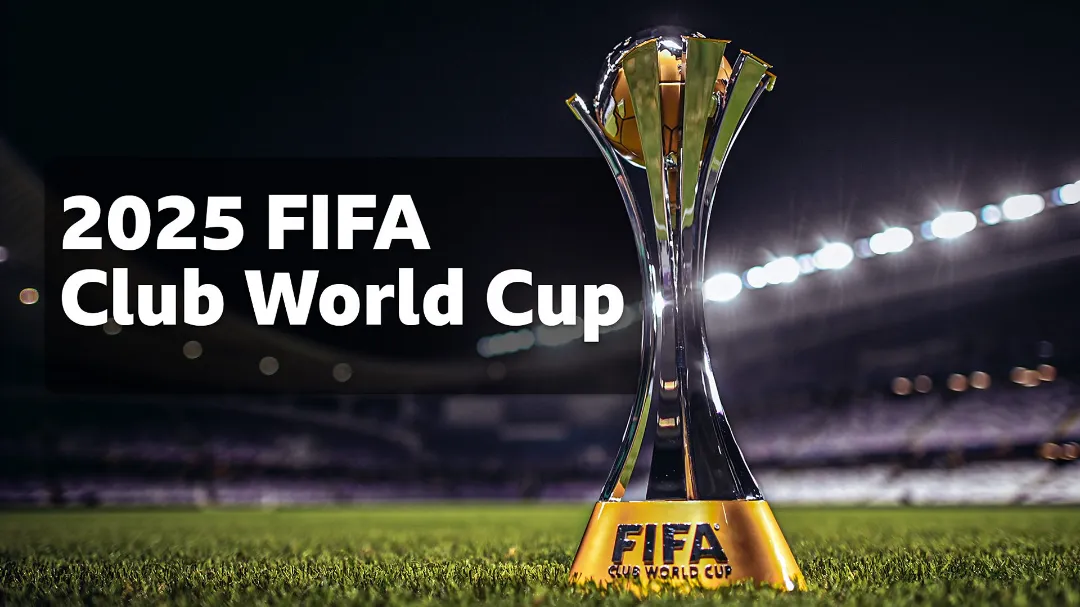
Club World Cup: Where Club Champions Clash
The FIFA Club World Cup, often referred to as the Club World Cup, stands as a unique and prestigious tournament where the champions of each continental confederation converge to determine the best club team in the world. This competition is the culmination of excellence in club football. On this stage, champions from Europe, South America, Africa, Asia, North America, and Oceania unite to vie for global supremacy.
The Club World Cup represents the pinnacle of club football, showcasing the extraordinary talents of the world’s top clubs and their players. It is where European giants, South American powerhouses, and emerging teams from other continents collide, creating a harmonious blend of styles, strategies, and cultures on the football pitch. The tournament celebrates global football, a testament to the sport’s ability to transcend borders and unite fans from every corner of the world.
Held annually, the Club World Cup provides a stage for clubs from different continents to test their mettle against each other. It is a platform where underdogs have the opportunity to upset the established order, where legends are made, and where club football’s rich tapestry continues to evolve. The Club World Cup is more than just a competition; it celebrates football’s unifying power and the pursuit of excellence in the beautiful game.
Concept and History: FIFA Club World Cup
The FIFA Club World Cup, a tournament born from the desire to determine the world’s best club team, has a unique concept and history that sets it apart in football. Established in its current format in 2005, the tournament has a rich backstory that dates back to the 1960s when it was known as the Intercontinental Cup. The concept was simple yet groundbreaking: bring together the champions of Europe and South America in a battle for global supremacy.
Over the years, the tournament expanded to include champions from other continents, creating a more inclusive and diverse competition. The FIFA Club World Cup became the ultimate test for club teams, a platform where they could prove their worth on a global stage. The tournament’s format, which includes a knockout stage followed by semifinals and a final, adds drama and excitement as the world watches to see which club will emerge as the best on the planet.
The history of the Club World Cup is marked by iconic moments, with teams like Real Madrid, Barcelona, and Bayern Munich leaving their mark on the tournament. Introducing new footballing cultures from regions like Asia and Africa has added depth and unpredictability to the competition. The Club World Cup is not just a trophy; it’s a celebration of club football’s global reach and the dream of every club team to be crowned the best in the world.
Memorable Showdowns: Club World Cup
The FIFA Club World Cup has witnessed numerous memorable showdowns that have etched their place in football history. One of the most iconic matches was the 2006 final between Barcelona and Internacional, where Ronaldinho’s brilliance shone as Barcelona claimed the title. The clash between Bayern Munich and Raja Casablanca in 2013 showcased the magic of the tournament, as the Moroccan underdogs pushed the German giants to the limit.
The rivalry between European and South American teams has often produced thrilling encounters, with dramatic finals like the one in 2018 between Real Madrid and River Plate. The competition has also seen the emergence of teams from other continents, such as Ulsan Hyundai’s run to the final in 2020, highlighting the growing competitiveness in global club football.
These memorable showdowns are more than just matches; they are moments of magic, drama, and passion that remind us of the global appeal of the FIFA Club World Cup. It’s a tournament where champions from different corners of the world come together to create footballing history and where the dream of being crowned the world’s best club becomes a reality for one team each year.
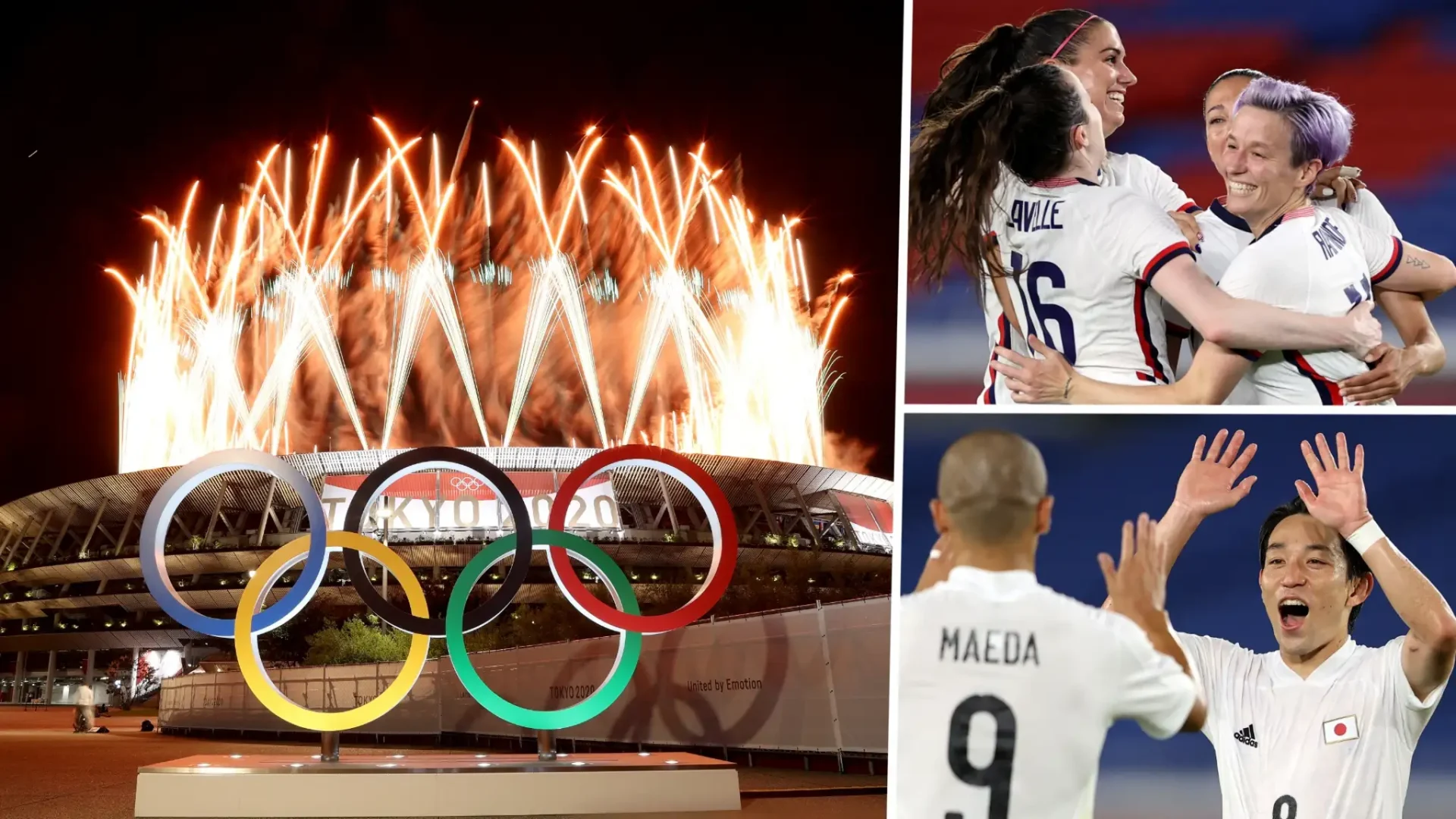
Olympic Football: Soccer’s Role in the Olympics
Olympic football, a cherished part of the Olympic Games, holds a unique position in soccer. As one of the original sports in the modern Olympic Games since 1900, it exemplifies the sport’s universal appeal and unifying power. Soccer’s presence in the Olympics goes beyond competition; it represents a convergence of sporting excellence, global unity, and the spirit of fair play.
Including soccer in the Olympics provides a stage for young talents to shine on the world stage. Unlike other international tournaments, the Olympic football competition is limited to under-23 players, with a few exceptions. This rule encourages the development of young talent and allows emerging players to showcase their skills on a global platform. Many legendary footballers, including Pelé, Diego Maradona, and Lionel Messi, began their international careers in Olympic football.
Olympic football also significantly promotes gender equality in sports, as women’s football has been an integral part of the Summer Olympics since 1996. This inclusion has propelled the growth of women’s soccer globally and has been instrumental in breaking down gender barriers in the sport.
Moreover, the Olympics allow nations to compete on an equal footing, regardless of their soccer history. It’s where emerging nations can challenge established powers and where the Olympic spirit of unity and friendship takes precedence over winning at all costs. Olympic football represents more than just medals; it embodies the ideals of the Olympic Movement, using soccer to promote friendship, solidarity, and fair play among nations.
Historical Significance: Soccer in the Olympics
The historical significance of soccer in the Olympics cannot be overstated. Since its inclusion in the modern Olympic Games in 1900, soccer has played a pivotal role in shaping the sporting landscape and fostering international camaraderie. The decision to include soccer in the Olympics recognized its universal appeal and ability to transcend borders, languages, and cultures.
One of the defining features of soccer in the Olympics is the age restriction. Unlike other international competitions, Olympic football is limited to under-23 players, with a few overage exceptions. This rule was introduced to prioritize the development of young talent and has been instrumental in launching the careers of some of the greatest footballers in history. The Olympics provided a global platform for young talents like Pelé, who announced himself to the world with a gold medal in 1958.
Moreover, the inclusion of women’s soccer in the Summer Olympics since 1996 marked a significant step towards gender equality in sports. It helped promote women’s football and empowered female athletes to compete at the highest level. The Olympics played a crucial role in breaking down gender barriers in soccer and showcasing the talents of female footballers to a global audience.
Notable Tournaments: Olympic Football
The Olympic football tournament has been the stage for numerous notable tournaments that have left an indelible mark on the sport. One of the most memorable editions was the 1954 tournament in Switzerland, where Hungary’s “Magical Magyars” displayed their attacking prowess and won the gold medal. The 1972 Olympics in Munich witnessed an iconic final between Hungary and Poland, with the former emerging victors in a thrilling match.
The 1984 Olympics in Los Angeles showcased the talent of a young Diego Maradona, who led Argentina to victory and left the world in awe of his skills. The 1992 Barcelona Olympics were particularly significant as they marked the “Dream Team” debut from the United States, featuring basketball legends like Michael Jordan and Magic Johnson.
Women’s Olympic football has also had its share of memorable tournaments, with the 2012 London Olympics standing out as a landmark moment for women’s soccer. The tournament saw the United States claim gold while Brazil’s Marta left an indelible mark as one of the greatest female footballers ever.
These notable tournaments are more than just sporting events; they are chapters in the history of soccer that showcase the talent, passion, and unity that define the Olympic spirit. The Olympic football tournament continues to be a platform where dreams are realized, stars are born, and the world comes together to celebrate the beautiful game.

Exploring Lesser-Known Soccer Tournaments
While the world’s attention is often drawn to the glitz and glamour of major soccer tournaments, a vibrant and diverse landscape of lesser-known soccer competitions deserves exploration. These tournaments, often overlooked on the global stage, offer unique insights into the sport’s regional diversity, cultural significance, and the undying passion of fans.
These lesser-known tournaments can be found in every corner of the globe, from the remote islands of Oceania to the bustling streets of Southeast Asia. They range from intercontinental club competitions to regional and national team championships and youth tournaments that serve as incubators for future stars.
Exploring these tournaments is like uncovering hidden gems in the world of soccer. It’s a journey that reveals the sport’s ability to thrive in unexpected places and a testament to the fact that football is more than just a game; it’s a way of life for millions of people worldwide.
In this section, we will embark on a journey to discover and celebrate some of these lesser-known soccer tournaments, shedding light on their unique characteristics, memorable moments, and the passionate communities that make them an integral part of the global footballing tapestry.
Hidden Gems: World of Soccer Tournaments
Hidden away from the spotlight of major international tournaments, a treasure trove of hidden gems exists in soccer tournaments. While not commanding the global attention of the World Cup or the UEFA Champions League, these lesser-known competitions possess a unique charm and significance that should not be overlooked. They are the sport’s grassroots, the nurturing grounds for talent, and a testament to soccer’s global reach.
From the Indian Super Cup, which showcases the burgeoning soccer scene in South Asia, to the OFC Nations Cup, where the footballing nations of Oceania come together to compete, these hidden gems celebrate the sport’s regional diversity. They provide a stage for emerging talents to shine, underdog stories to unfold, and for communities to support their teams.
These tournaments also play a crucial role in fostering the growth of soccer in their respective regions. They provide valuable experience for players, coaches, and officials, contributing to the development of the sport at the grassroots level. Moreover, they serve as a source of pride for nations and communities, instilling a sense of identity and belonging through soccer.
Importance of Regional Competitions: Soccer
Regional soccer competitions hold a special place in the sport’s ecosystem, serving as vital stepping stones for players and teams on their journey to the global stage. These competitions, whether at the club or national team level, are pivotal in nurturing talent, promoting rivalries, and fostering a sense of community among fans.
At the club level, regional tournaments provide a platform for teams to test their mettle against familiar foes. Rivalries are born and intensified in these competitions, adding extra excitement to the sport. Regional competitions also offer a pathway to international tournaments, allowing clubs to earn qualification and represent their region on a larger stage.
For national teams, regional competitions are an essential part of the qualification process for major international tournaments. These tournaments allow teams to compete against neighbors and rivals, often in fiercely contested matches. Regional pride and bragging rights cannot be underestimated in these competitions, fueling the passion and intensity on the pitch.
In addition to their sporting significance, regional competitions contribute to the growth and development of soccer at the grassroots level. They inspire young talents, expose different playing styles, and create a sense of community and belonging. Regional soccer competitions are about winning titles and building connections, nurturing talent, and celebrating the sport’s enduring appeal at the local and regional levels.
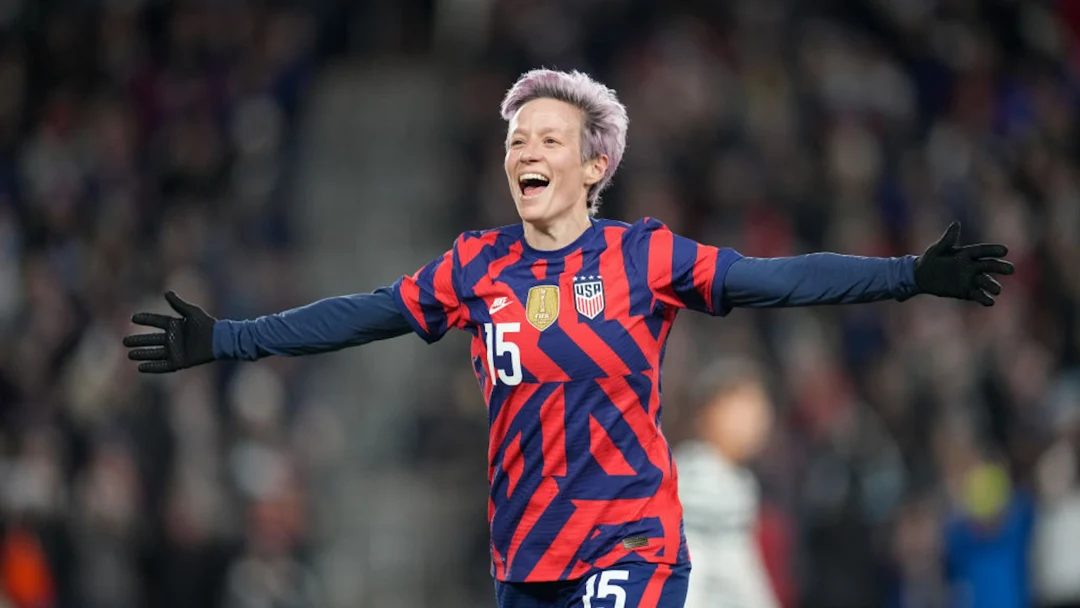
Women’s Soccer Tournaments: Rising to Prominence
Women’s soccer has undergone a remarkable transformation in recent years, with women’s soccer tournaments ascending to new heights of prominence and popularity. What was once a sport on the fringes has now become a global phenomenon, capturing the hearts and minds of fans worldwide.
The rise of women’s soccer tournaments can be attributed to several factors. Increased investment and support from national governing bodies and clubs have elevated the standards of women’s football, resulting in higher-quality competitions. The success of female players on the international stage, combined with the emergence of women’s club football leagues, has drawn more attention to the sport.
Tournaments like the FIFA Women’s World Cup, the UEFA Women’s European Championship, and the Olympic women’s football competition have become marquee events, attracting large audiences and generating excitement akin to their male counterparts. These tournaments showcase female footballers’ extraordinary talent, skill, and determination and have shattered records for viewership and attendance.
Moreover, the growth of women’s soccer tournaments has brought about positive social change, challenging stereotypes and empowering women and girls to pursue their sports dreams. It has also played a crucial role in advancing gender equality in sports, both on and off the pitch.
In this section, we will explore the remarkable journey of women’s soccer tournaments as they rise to prominence, celebrate the achievements of female players, and highlight the impact of these tournaments on the global sports landscape.
Evolution: Women’s Soccer Competitions
The evolution of women’s soccer competitions is a testament to the determination, talent, and resilience of female footballers worldwide. Over the years, women’s soccer has transformed from a marginalized and often overlooked sport to a thriving global phenomenon, with a rich tapestry of competitions that rival their male counterparts in excitement and quality.
The journey of women’s soccer competitions began with the inaugural FIFA Women’s World Cup in 1991, which marked a historic moment for the sport. Since then, the tournament has grown in stature and popularity, with increasing participation from nations and a surge in global viewership. The inclusion of women’s football in the Olympic Games 1996 further solidified its status as a mainstream sport.
Club competitions have also played a pivotal role in the evolution of women’s soccer. Leagues like the National Women’s Soccer League (NWSL) in the United States and the Women’s Super League (WSL) in England have provided a platform for top female players to compete at the club level, elevating the game’s standards. The UEFA Women’s Champions League has become the pinnacle of women’s club football in Europe, featuring iconic teams and fierce rivalries.
The evolution of women’s soccer competitions is a story of progress, resilience, and the relentless pursuit of excellence. Female footballers have broken barriers, shattered stereotypes, and inspired generations of young girls to follow their dreams on the pitch. As women’s soccer continues to evolve, its future looks brighter than ever, with the promise of more landmark moments and achievements on the horizon.
Landmark Moments: Women’s Soccer
Women’s soccer has been marked by landmark moments that have left an indelible mark on the sport’s history. From the first FIFA Women’s World Cup in 1991 to the present day, these moments represent significant milestones in the journey of women’s football.
One of the early landmark moments came in 1999 when the United States hosted the FIFA Women’s World Cup. The tournament captured the imagination of fans worldwide, with iconic images of Brandi Chastain’s winning penalty kick celebration etched in memory. The tournament’s success propelled women’s soccer into the mainstream and inspired a new generation of female players.
The growth of women’s club football has also witnessed landmark moments, with the formation of professional leagues and the emergence of star players like Marta, Abby Wambach, and Birgit Prinz. The UEFA Women’s Champions League has seen historic victories and memorable finals that have elevated the status of women’s club football in Europe.
More recently, landmark moments include the record-breaking viewership of the FIFA Women’s World Cup in 2019, significant clubs’ increased investment in women’s soccer, and the continued push for gender equality in sports.
These landmark moments are achievements on the field and milestones in the journey toward greater recognition, respect, and opportunities for female footballers. They inspire future generations of players, ensuring that the legacy of women’s soccer continues to grow and evolve.

Youth Soccer Tournaments: Future Stars on Display
Youth soccer tournaments serve as the cradle of talent, the incubators of future stars, and the stages where young players first make their mark on the global footballing landscape. These tournaments, often overlooked in favor of their senior counterparts, are where the dreams of young footballers take flight and where the next generation of soccer legends begins to emerge.
The significance of youth soccer tournaments cannot be overstated. They provide a platform for young talents to showcase their skills, gain valuable experience, and catch the eye of scouts and talent spotters from top clubs worldwide. It’s a journey that can take a young player from local pitches to international stardom.
One of the most prestigious youth soccer tournaments is the FIFA U-20 World Cup, which features national teams of players under 20. This tournament has been a breeding ground for future stars, with past participants including Diego Maradona, Lionel Messi, and Cristiano Ronaldo. The competition is a window into the potential greatness of young players, where raw talent meets the global stage.
At the club level, youth academies and development programs often compete in international youth tournaments to test their young talents against the best. The UEFA Youth League, for example, mirrors its senior counterpart, the UEFA Champions League, and provides a glimpse into the future of European club football.
These tournaments are about winning trophies, nurturing talent, instilling discipline, and imparting valuable life skills to young players. They are about creating a pathway for young dreams to become reality and for future stars to emerge from the shadows.
This section will delve into youth soccer tournaments, exploring their significance, impact on player development, and the exciting talents gracing their pitches. We will celebrate the promise of the next generation of soccer stars and the role these tournaments play in shaping the future of the beautiful game.
Importance: Youth Tournaments in Soccer Development
The importance of youth tournaments in soccer development cannot be overstated. These competitions are the breeding grounds for future stars, the laboratories of talent, and the catalysts for player growth and advancement. They play a pivotal role in shaping the trajectory of young footballers, instilling the skills, experiences, and mindset required to excel in the sport.
Youth tournaments provide a stage for young players to test their abilities against their peers worldwide. The intensity of international competition at a young age not only hones their technical skills but also exposes them to different playing styles, strategies, and cultures. It’s a formative experience that prepares them for the challenges of senior-level soccer.
Moreover, youth tournaments are watched closely by scouts, talent spotters, and top clubs. A standout performance in a youth tournament can open doors to professional contracts, trials with prestigious teams, and the opportunity to embark on a professional soccer career. For many young players, these tournaments are the launchpads for their dreams.
The camaraderie and national pride of representing one’s country in youth tournaments are invaluable. It instills a sense of responsibility, teamwork, and determination beyond the field. These life lessons and passion for the sport shape young players into skilled and responsible athletes.
Notable Competitions: Youth Soccer Globally
Youth soccer tournaments are held globally, allowing young talents from different regions to compete and showcase their skills. Some of the most notable youth tournaments include:
- FIFA U-20 World Cup: This prestigious tournament features national teams of players under the age of 20. It has served as a launching pad for many footballing legends.
- UEFA Youth League: The youth counterpart of the UEFA Champions League, this competition allows the youth academies of top European clubs to compete at the continental level.
- CONCACAF U-20 Championship: This tournament showcases the emerging talents from North and Central America and the Caribbean.
- AFC U-19 Championship: Asia’s premier youth competition, where the best young talents from the continent vie for supremacy.
- African U-20 Cup of Nations: This tournament brings together the youth teams of African nations, offering a glimpse into the future of African football.
- Copa Libertadores Sub-20: South America’s youth equivalent of the Copa Libertadores, featuring top young talents from the continent.
- Milk Cup: Held in Northern Ireland, this youth tournament attracts teams from around the world and has a reputation for producing future stars.
These youth tournaments provide a platform for young players to gain experience and serve as a scouting ground for top clubs. The competitive nature of these competitions ensures that the future of soccer remains bright, with a constant influx of promising talent.
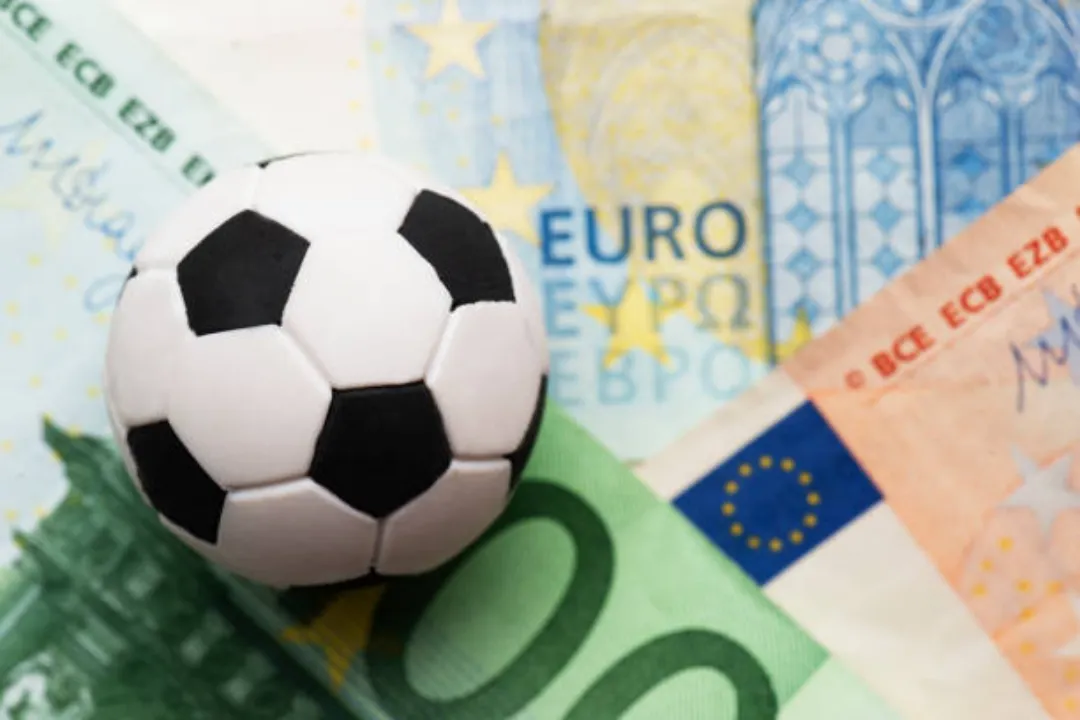
Soccer Tournaments: Economic and Social Impact
Soccer tournaments, whether on the international or club level, have a profound impact that extends far beyond the pitch. They are not just sporting events but economic powerhouses and catalysts for social change. The convergence of nations, the passion of fans, and the spectacle of the sport create a unique environment that leaves a lasting imprint on economies and societies.
The Economic Benefits of Hosting Soccer Tournaments
- Tourism and Hospitality: Hosting a major soccer tournament attracts millions of visitors worldwide. This influx of tourists stimulates the hospitality industry, including hotels, restaurants, and transportation services. It creates jobs and generates revenue, boosting the local economy.
- Infrastructure Development: Preparing for a tournament often necessitates significant investments in infrastructure. New stadiums, transportation networks, and urban development projects are undertaken, leaving a lasting legacy of modernization and improved public amenities.
- Merchandising and Sponsorship: Soccer tournaments are a goldmine for merchandising and sponsorship deals. The sale of merchandise, official merchandise, and sponsorship agreements contribute substantially to the tournament’s revenue. Fans eagerly purchase team jerseys, memorabilia, and official merchandise, creating a global market for soccer-related products.
- Media Rights and Broadcasting: Television broadcasting rights for major soccer tournaments are among the most valuable in sports. Networks and streaming platforms bid exorbitant amounts to secure broadcasting rights, and the exposure generated by these broadcasts attracts advertisers, further boosting revenue.
Social and Cultural Influences of Soccer Events
- Cultural Unity: Soccer tournaments have a unifying effect on societies. They bring people of different backgrounds, cultures, and beliefs together to support their teams. The shared experience of watching matches, celebrating victories, and commiserating defeats fosters a sense of unity and national pride.
- Community Engagement: Soccer events often lead to increased community engagement. Viewing parties, fan zones, and local events create opportunities for people to unite, socialize, and celebrate their passion for the sport.
- Inspiration for Youth: Young aspiring footballers are inspired by their idols’ performances on the world stage. The success stories of players who rise from humble beginnings to achieve greatness serve as motivation for the next generation of athletes.
- Social Inclusion: Soccer has the power to break down barriers and promote social inclusion. It transcends differences in gender, race, and socioeconomic status, creating a space where everyone can participate and belong.
- Legacy Projects: Many tournaments leave behind legacy projects that benefit communities long after the final whistle. These projects may include improved sports facilities, educational programs, and initiatives to promote healthy lifestyles.
Soccer tournaments are more than just games; they are global phenomena that impact economies, shape cultures, and unite nations. They remind us of the unifying power of sports and the potential for positive change in the world’s most popular game.

Technology in Soccer: VAR and Beyond
Technology has become an integral part of modern soccer, revolutionizing the way the game is played, officiated, and experienced by fans. From introducing Video Assistant Referees (VAR) to exploring cutting-edge innovations, soccer’s embrace of technology is reshaping its landscape.
The Introduction and Impact of VAR in Major Tournaments
- Enhancing Fair Play: VAR was introduced to address controversial decisions and ensure fair play on the field. With video replays, referees can review critical moments, such as goals, penalties, and red card incidents. This has led to more accurate decision-making and reduced the impact of human error.
- Reducing Controversy: VAR has significantly reduced the controversy surrounding critical decisions in soccer. It provides a level of transparency and accountability that was previously unavailable. Fans, players, and coaches can see the evidence behind each decision, contributing to a better understanding of the game.
- Challenges and Adjustments: While VAR has improved decision-making, it has also faced challenges and criticisms, including concerns about the length of reviews and the interpretation of rules. Soccer’s governing bodies continue to refine and adapt VAR to balance accuracy and the game flow.
Future Technological Advances in Soccer
- Goal-Line Technology: Goal-line technology determines whether the ball has crossed the goal line and is now a standard feature in major soccer tournaments. It provides instantaneous and accurate decisions, leaving no room for debate.
- Player Performance Analysis: Advanced analytics and wearable technology are increasingly used to track players’ physical performance and provide insights into their condition and fitness. This data-driven approach helps teams make informed decisions about player selection and training.
- Fan Engagement: Technology has transformed the way fans engage with soccer. Mobile apps, social media, and virtual reality experiences allow fans to connect with their favorite teams and players on a deeper level, regardless of geographic location.
- Stadium Experience: Stadiums are becoming innovative venues, offering fans enhanced experiences through Wi-Fi, mobile ticketing, and interactive displays. Augmented reality (AR) and virtual reality (VR) are also being explored to provide immersive experiences for attendees.
- Innovations in Broadcasting: Broadcasters are using technology to enhance the viewing experience for fans. High-definition cameras, multiple camera angles, and augmented reality graphics give viewers a more comprehensive and immersive game perspective.
Technology continues to push the boundaries of what is possible in soccer, from improving officiating to enhancing the fan experience. As the sport embraces innovation, the future holds exciting possibilities for further advancements to shape how soccer is played, watched, and enjoyed by fans worldwide.

Soccer Tournaments: A Look at Fan Culture
Soccer tournaments are not just about the players on the pitch; they celebrate fan culture, where passion, loyalty, and creativity come to life. The role of fans in soccer tournaments is nothing short of extraordinary, shaping the atmosphere, traditions, and memorable moments that define the sport.
Role of Fans: Soccer Tournaments
- The 12th Player: Fans are often called the “12th player” because of their ability to influence matches. The crowd’s roar, chants, and unwavering support can inspire players and create an intimidating atmosphere for opponents.
- Home Advantage: Playing in front of a passionate home crowd can significantly advantage teams. Fans’ energy and enthusiasm can lift players’ spirits and drive them to give their best performance.
- Cultural Significance: Soccer tournaments are deeply embedded in the cultures of nations and regions. Fans bring their unique traditions, songs, and rituals to the stadiums, adding cultural richness to the game.
- Global Community: Soccer tournaments create a global community of fans who come together to celebrate the sport. Fans from different countries and backgrounds unite in their love for the game, fostering a sense of camaraderie.
Memorable Fan Moments and Celebrations
- Tifo Displays: Tifos are massive choreographed displays by fans before matches. These intricate banners, often covering entire stadium sections, depict team logos, slogans, and artistic designs. Tifos are a stunning visual expression of fan passion.
- Chants and Songs: Fans create an electric atmosphere in stadiums with their chants and songs. From the rhythmic claps of the Iceland “Viking Clap” to the iconic “You’ll Never Walk Alone” at Liverpool, these chants resonate and become part of the club or national team’s identity.
- Jersey Swaps: A heartwarming tradition is when players swap jerseys with opponents after matches. This symbolizes mutual respect and the spirit of sportsmanship, often resulting in memorable moments of camaraderie.
- Post-Match Celebrations: After a significant victory, fans flood the streets to celebrate with their fellow supporters. These celebrations are marked by dancing, singing, and waving flags, creating an unforgettable party atmosphere.
- Fan Art and Creativity: Fans express their devotion through art, creating stunning fan-made posters, paintings, and digital artwork. Social media platforms are filled with fan-generated content that showcases their creativity.
- Charitable Initiatives: Fans often come together to support charitable causes related to their teams or tournaments. Whether fundraising for a local charity or helping needy communities, fans use their passion for the greater good.
Soccer tournaments are not just about the competition; they are a canvas for fan culture to flourish. The passion, traditions, and shared experiences of fans add a unique dimension to the beautiful game, making soccer tournaments a global celebration of unity and joy.

Soccer Tournaments and Media Coverage
Soccer tournaments have undergone a remarkable transformation in how they are covered by media, with advancements in technology and the rise of social media reshaping the landscape of sports broadcasting.
Evolution: Soccer Broadcasting
The evolution of soccer broadcasting has made the sport more accessible and immersive for fans around the world:
- Television Coverage: Soccer tournaments were traditionally broadcast on television, and the quality of coverage has continually improved. High-definition broadcasts, multiple camera angles, and in-depth analysis have become standard, providing viewers with a richer and more engaging experience.
- Digital Streaming: Digital streaming platforms have revolutionized how fans watch soccer. Streaming services allow viewers to watch matches on various devices, offering flexibility and convenience. Major tournaments are often streamed live, making it easier for fans to follow their favorite teams and players.
- Virtual Reality (VR) and Augmented Reality (AR): VR and AR technologies can transform how fans experience soccer. Virtual reality can transport fans to the stadium, providing a 360-degree view of the action, while augmented reality can overlay graphics and statistics onto the live feed, enhancing the viewing experience.
Role of Social Media: Modern Soccer
Social media has become a pivotal part of modern soccer culture, influencing how fans interact with the sport:
- Real-Time Updates: Social media platforms like Twitter and Instagram provide real-time updates on matches, including live commentary, goal highlights, and player reactions. Fans can stay informed and engaged throughout the tournament.
- Fan Communities: Social media has enabled the creation of global fan communities. Supporters from different corners of the world can connect, share their passion, and discuss matches, creating a sense of camaraderie.
- Player Engagement: Players and teams use social media to connect directly with fans. They share behind-the-scenes moments, engage in Q&A sessions, and offer a glimpse into their personal lives, fostering a closer bond with supporters.
- Video Content: Platforms like YouTube and TikTok have become hubs for soccer-related video content. Fans can watch match highlights, skill compilations, and fan-made videos, further enhancing their soccer experience.
- Influencer Marketing: Soccer tournaments collaborate with social media influencers and content creators to reach a wider audience. Influencers often provide unique perspectives and engage with fans in creative ways.
- Hashtag Campaigns: Hashtags related to soccer tournaments have become trending topics on social media. They allow fans to participate in discussions, share their opinions, and contribute to the tournament’s online buzz.
The intersection of media coverage and social media has made soccer tournaments more accessible, interactive, and inclusive. Fans can now engage with the sport in real time, connect with fellow supporters, and become active participants in the global soccer conversation.

The Business of Soccer Tournaments
Soccer tournaments have evolved into multi-billion-dollar enterprises, with a complex web of financial dynamics, sponsorship deals, and commercialization strategies driving their success.
Sponsorship and Commercialization in Soccer
- Title Sponsors: Many major soccer tournaments secure title sponsors, leading to events being named after corporations. These sponsors gain significant exposure and branding opportunities while the tournaments receive crucial financial support.
- Jersey Sponsorships: Clubs and national teams often feature sponsor logos on their jerseys. These deals can be highly lucrative, providing financial stability and allowing teams to invest in talent and infrastructure.
- Broadcasting Rights: Selling broadcasting rights to television networks and streaming platforms is a significant revenue source. The competition for these rights, especially for prestigious tournaments like the World Cup and Champions League, drives up their value.
- Stadium Advertising: Advertising within stadiums, including LED boards and banners, generates revenue and enhances brand visibility during matches.
- Merchandising: Official merchandise, including jerseys, scarves, and accessories, is a significant revenue stream. Fans worldwide eagerly purchase these items, contributing to the tournament’s financial success.
The Financial Dynamics of Soccer Events
- Prize Money: Tournaments offer substantial prize money to winning teams, incentivizing top performances. The World Cup, for example, offers a substantial cash prize to the champion.
- Ticket Sales: Ticket sales provide revenue and create an electrifying stadium atmosphere. Fans eagerly purchase tickets to witness matches live, generating income for the organizers.
- Corporate Partnerships: Collaborations with corporate partners extend beyond sponsorships. Partnerships can include marketing campaigns, fan engagement initiatives, and hospitality packages.
- Licensing and Royalties: Licensing agreements for video games, collectibles, and other merchandise contribute to revenue. Royalties from these licensing deals provide a steady income source.
- Hospitality Packages: VIP experiences, including premium seating, exclusive access, and fine dining, attract high-paying guests, enhancing the financial returns of tournaments.
- Tourism Impact: Hosting major tournaments attracts tourists, boosting the local economy through spending on accommodation, dining, and transportation.
- Media and Advertising: Advertising slots during broadcasts and promotional campaigns generate substantial income for tournaments.
Soccer tournaments have become formidable economic engines, benefiting the sport and the communities and businesses associated with them. The financial dynamics, sponsorship deals, and commercialization efforts ensure that these tournaments continue to thrive and capture the hearts of fans worldwide.

Soccer Tournaments: Health and Safety Concerns
As grand spectacles of the sport, soccer tournaments prioritize the well-being and safety of players, officials, and fans. Health and safety concerns are at the forefront of major competitions, and recent events have further underscored their significance.
Ensuring Player Safety: Major Competitions
- Medical Staff and Facilities: Major tournaments invest heavily in medical infrastructure, including on-site medical teams, advanced equipment, and well-equipped medical facilities within stadiums. This ensures that immediate medical attention can be provided in case of injuries or emergencies.
- Player Monitoring: Sports science and technology monitor player fitness and health. GPS trackers, heart rate monitors, and data analysis help teams manage player workload and reduce the risk of injuries.
- Hydration and Nutrition: Proper hydration and nutrition plans are in place to optimize player performance and recovery. Nutritionists and dieticians work closely with teams to create tailored plans for players.
- Travel and Accommodation: Travel schedules are carefully planned to minimize fatigue and jet lag. Accommodations are chosen with player comfort and rest in mind, including considerations for sleep quality and recovery facilities.
- Anti-Doping Measures: Strict anti-doping protocols are enforced to maintain the integrity of the sport. Random drug testing and adherence to the World Anti-Doping Agency (WADA) regulations are standard.
- Mental Health Support: Mental health awareness and support have gained prominence. Teams provide access to psychologists and counselors to address mental health concerns among players.
Impact of COVID-19: Soccer Tournaments
The COVID-19 pandemic has brought unprecedented challenges to soccer tournaments:
- Health Protocols: Tournaments have implemented rigorous health and safety protocols, including regular testing, quarantine measures, and bio-secure bubbles. These measures aim to protect players and staff from COVID-19 transmission.
- Fan Restrictions: To mitigate the spread of the virus, many tournaments have restricted fan attendance or played matches behind closed doors. This has had financial implications but was deemed necessary for public health.
- Schedule Disruptions: The pandemic disrupted tournament schedules, leading to postponements and rescheduling. This created logistical challenges but was essential to prioritize safety.
- Vaccination Campaigns: Many soccer tournaments have played a role in promoting vaccination campaigns. Players and staff have been encouraged to get vaccinated to protect themselves and others.
- Adaptation and Innovation: Tournaments have adapted to the new normal by leveraging technology for remote training and analysis. Virtual press conferences and fan engagement initiatives have become common.
Soccer tournaments remain committed to the safety of all involved, adapting to evolving challenges such as the COVID-19 pandemic. The health and well-being of participants and fans remain paramount, ensuring the sport can be enjoyed safely and responsibly.

The Future of Soccer Tournaments
The landscape of soccer tournaments is constantly evolving, shaped by emerging trends, innovations, and the ever-changing global soccer ecosystem. As we look ahead, several vital factors and predictions offer insights into the future of soccer championships.
Emerging Trends in Global Soccer
- Technology Integration: Technology integration will continue to enhance the fan experience. Virtual reality (VR) and augmented reality (AR) will provide immersive viewing, while artificial intelligence (AI) will aid in player performance analysis.
- Sustainability Initiatives: Soccer tournaments will increasingly focus on sustainability. Host countries and cities will prioritize eco-friendly venues, transportation, and waste management to reduce their carbon footprint.
- Inclusivity and Diversity: Efforts to promote inclusivity and diversity in soccer will expand. This includes more excellent representation of women in leadership roles, addressing racial discrimination, and providing equal opportunities for all.
- Youth Development: Youth development programs will become even more critical. Tournaments will invest in nurturing young talent to ensure a sustainable pipeline of future soccer stars.
- Global Expansion: Soccer’s global reach will expand further. New markets in Asia, Africa, and North America will gain prominence, with tournaments exploring expansion opportunities.
- Fan Engagement: Fan engagement will reach new heights through personalized content, interactive experiences, and increased connectivity. Social media and digital platforms will be central to fostering fan communities.
Predictions for Future Soccer Championships
- World Cup Innovation: The FIFA World Cup will continue to innovate, with potential changes to the format, additional teams, or even joint hosting by multiple nations. VR experiences allow fans to attend matches virtually.
- Women’s Soccer Growth: Women’s soccer tournaments will experience exponential growth. Increased investment, media coverage, and fan interest will propel women’s tournaments to new heights of popularity.
- Youth Dominance: Youth tournaments, such as the FIFA U-20 World Cup, will gain more attention as they become showcases for emerging talents. Young players will take center stage on the global soccer scene.
- Soccer Olympics: The Olympic football tournament will remain prestigious for young talents. It will serve as a platform for international exposure and a stepping stone to professional careers.
- Club World Cup Expansion: The FIFA Club World Cup may expand to include more teams from various regions, creating a more comprehensive club competition on a global scale.
- Sustainable Hosting: Hosting countries will prioritize sustainable practices, including eco-friendly stadiums, renewable energy sources, and carbon offset programs, setting a precedent for future events.
- Global Partnerships: Soccer tournaments will form global partnerships with organizations and brands that share their values, leading to greater financial stability and opportunities for growth.
As soccer continues to capture the hearts of fans worldwide, the future promises exciting developments, with innovation, inclusivity, and sustainability at the forefront. These factors will shape the next generation of soccer tournaments, ensuring that the beautiful game remains a global phenomenon for years to come.

Comparing Soccer Tournaments: An Analysis
Soccer tournaments vary in format, significance, and impact on the game. An analysis of these tournaments reveals how they shape the sport and their unique characteristics.
How Different Tournaments Shape the Game: Soccer
- International vs. Club Competition: Tournaments like the FIFA World Cup are international, showcasing national teams, while the UEFA Champions League focuses on club competitions. This distinction influences the style of play and the level of national pride involved.
- Frequency and Duration: The frequency and duration of tournaments differ. Some, like the World Cup and Euros, occur every four years and span a month, while club competitions like the Champions League run annually. These factors affect player fatigue and team preparation.
- Tournament Format: Tournaments employ varying formats, such as knockout stages, group stages, or double-legged ties. The format impacts team strategies, emphasizing the importance of tactics and adaptability.
- Global vs. Regional Appeal: The appeal of tournaments varies globally and regionally. While the World Cup attracts a global audience, regional tournaments like Copa América and the Gold Cup have a more localized fan base.
- Historical Significance: Tournaments like the World Cup and Euros have a rich historical legacy, with iconic moments etched in soccer history. Club competitions like the Champions League build their own legacies with legendary matchups.
Unique Characteristics: Major Soccer Events
- World Cup: The World Cup is a unifying global event, transcending cultural and political boundaries. It showcases national pride, with the world’s best players representing their countries.
- Champions League: The UEFA Champions League is renowned for its intensity and high-level club competition. The format ensures top clubs face off, creating iconic moments.
- Copa América: Copa América embodies South American passion and flair. It celebrates the continent’s soccer culture, featuring intense rivalries.
- AFCON: AFCON celebrates African soccer heritage and provides a platform for emerging talents to shine on the world stage.
- Gold Cup: The Gold Cup is North America’s battle, with fierce rivalries between the USA and Mexico. Smaller nations have a chance to upset the status quo.
- Asian Cup: The Asian Cup showcases the growth of soccer in Asia, with diverse playing styles and emerging footballing cultures.
- Euros: The Euros celebrate European soccer with historic rivalries and dramatic moments. It’s a football festival on the continent.
- Club World Cup: The Club World Cup features the best club teams globally, with the chance for underdogs to challenge established giants.
- Olympic Football: Olympic soccer provides a platform for young talents and emphasizes the importance of youth development.
- Youth Tournaments: Youth tournaments nurture future stars and offer a glimpse into the talent pipeline.
Each major soccer event, whether international or club-based, contributes to the sport’s rich tapestry. They shape the game, inspire players and fans, and create enduring memories that define soccer’s enduring appeal.

Soccer Tournaments: Environmental Considerations
In recent years, soccer tournaments have greatly emphasized environmental considerations, recognizing the significant impact these events can have on the environment. Tourists are taking steps to mitigate their environmental footprint and promote eco-friendly practices as the world becomes increasingly conscious of sustainability.
Environmental Impact: Hosting Soccer Events
The environmental impact of hosting soccer events can be substantial. Large stadiums, transportation of fans and teams, and the energy required for matches contribute to carbon emissions. Moreover, constructing new venues can lead to deforestation and habitat destruction. These factors have prompted organizers to assess and address the environmental consequences of their tournaments.
Sustainable Practices: Soccer Tournaments
To reduce their ecological footprint, soccer tournaments are adopting sustainable practices:
- Eco-Friendly Stadiums: Hosting cities are prioritizing the construction of eco-friendly stadiums. These venues are designed with energy-efficient lighting, water-saving technologies, and sustainable materials to minimize resource consumption.
- Renewable Energy: Some tournaments are powered by renewable energy sources, such as wind and solar power, reducing reliance on fossil fuels and lowering greenhouse gas emissions.
- Public Transportation: Encouraging public transportation for fans and teams is becoming standard practice. Shuttle services, bike-sharing programs, and efficient public transit options aim to reduce traffic congestion and emissions.
- Carbon Offsetting: Tournaments are investing in carbon offsetting initiatives, such as reforestation projects, to compensate for their carbon emissions. This helps mitigate the environmental impact of the event.
- Waste Management: Comprehensive waste management systems are implemented to minimize landfill waste. Recycling and composting programs at stadiums and fan zones reduce the volume of trash generated.
- Plastic Reduction: Initiatives to reduce single-use plastics, such as water bottles and food containers, help minimize plastic waste.
- Local Sourcing: Sourcing products and materials locally reduces the carbon footprint associated with transportation. This supports local businesses and reduces the environmental impact.
- Community Engagement: Tournaments often engage with local communities to promote sustainability awareness and education, encouraging eco-friendly practices beyond the event.
Soccer tournaments are committed to responsible environmental stewardship as the world addresses climate change and environmental challenges. By adopting sustainable practices and minimizing their ecological impact, these events showcase the beautiful game and set an example for a more sustainable future.
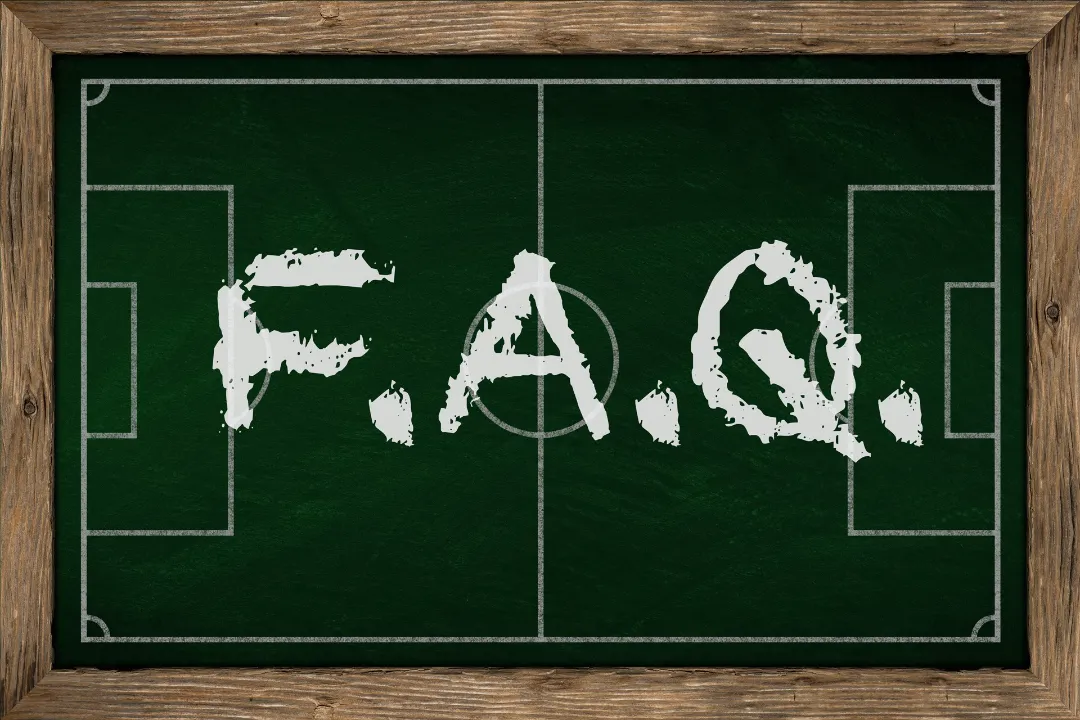
FAQs About Soccer Tournaments
With their global appeal and intricacies, soccer tournaments often generate questions from fans and enthusiasts seeking to understand the nuances of these grand events. Here are some common questions about soccer’s biggest tournaments:
What is the FIFA World Cup, and how often is it held?
The FIFA World Cup is the most prestigious international soccer tournament, held every four years. It features national teams from around the world competing for the coveted trophy.
How does the UEFA Champions League differ from the World Cup?
The UEFA Champions League is a club competition, while the World Cup is an international tournament. The Champions League features top European club teams, whereas the World Cup showcases national teams.
What is the Copa América, and why is it significant in South America?
The Copa América is South America’s premier international tournament. It holds great significance in the continent’s soccer culture, featuring intense rivalries and showcasing South American talent.
What is the African Cup of Nations (AFCON), and how does it promote African soccer heritage?
AFCON is Africa’s top international tournament, celebrating the continent’s soccer heritage. It provides a platform for African teams to compete and showcase their skills on a global stage.
What is the CONCACAF Gold Cup, and why is it essential in North America?
The CONCACAF Gold Cup is North America’s premier international tournament. It features teams from North and Central America and the Caribbean, with intense rivalries, especially between the USA and Mexico.
What is the Asian Cup, and how does it contribute to the growth of soccer in Asia?
The Asian Cup is Asia’s leading international tournament. It is crucial in promoting soccer’s growth in the region, showcasing diverse playing styles and emerging football cultures.
What is the UEFA European Championship (Euros), and why is it highly regarded in Europe?
The Euros is Europe’s premier international tournament, featuring top European national teams. It is highly regarded for its historic rivalries and dramatic moments.
What is the FIFA Club World Cup, and how does it differ from the Champions League?
The FIFA Club World Cup features the best club teams worldwide. It differs from the Champions League, which focuses solely on European club teams.
Why is Olympic football significant, and what role does it play in the Olympics?
Olympic football is a prestigious event for young talents. It provides them with international exposure and is integral to the Olympic Games.
What are some lesser-known soccer tournaments worth exploring?
Lesser-known tournaments, such as the FIFA U-20 World Cup, and regional competitions, like the CONCACAF Nations League, offer unique insights into developing soccer talent and regional soccer cultures.

Conclusion: The Unifying Power of Soccer
As we journeyed through the world of soccer tournaments, it became abundantly clear that this sport uniquely unites people from all corners of the globe. Beyond the goals, victories, and defeats, soccer tournaments transcend mere athletic contests, becoming a powerful force that shapes cultures, societies, and individual lives.
The unifying power of soccer extends beyond borders and languages, bringing together individuals with a shared passion and love for the beautiful game. It fosters a sense of belonging, where fans from diverse backgrounds unite under the banner of their favorite teams, celebrating victories and consoling each other in defeat.
Reflecting on the Impact and Future: Soccer Tournaments
As we look to the future of soccer tournaments, it’s evident that they will continue to evolve and adapt to the changing times. Emerging trends in technology, sustainability, and inclusivity will shape the landscape of these events, ensuring that they remain relevant and impactful in the years to come.
Soccer tournaments will continue to inspire generations of players and fans, providing a platform for talent to shine and unforgettable moments to be etched into history. Whether it’s the excitement of the World Cup, the drama of the Champions League, or the pride of representing one’s nation, soccer tournaments will remain a source of joy, inspiration, and unity for all who partake in the beautiful game.
Elevate Your Soccer Passion With Ninety
Discover a world where soccer culture knows no bounds. Dive into the essence of the beautiful game, celebrated in every product we offer. Welcome to Ninety, where legends are born and the spirit of soccer comes to life.




